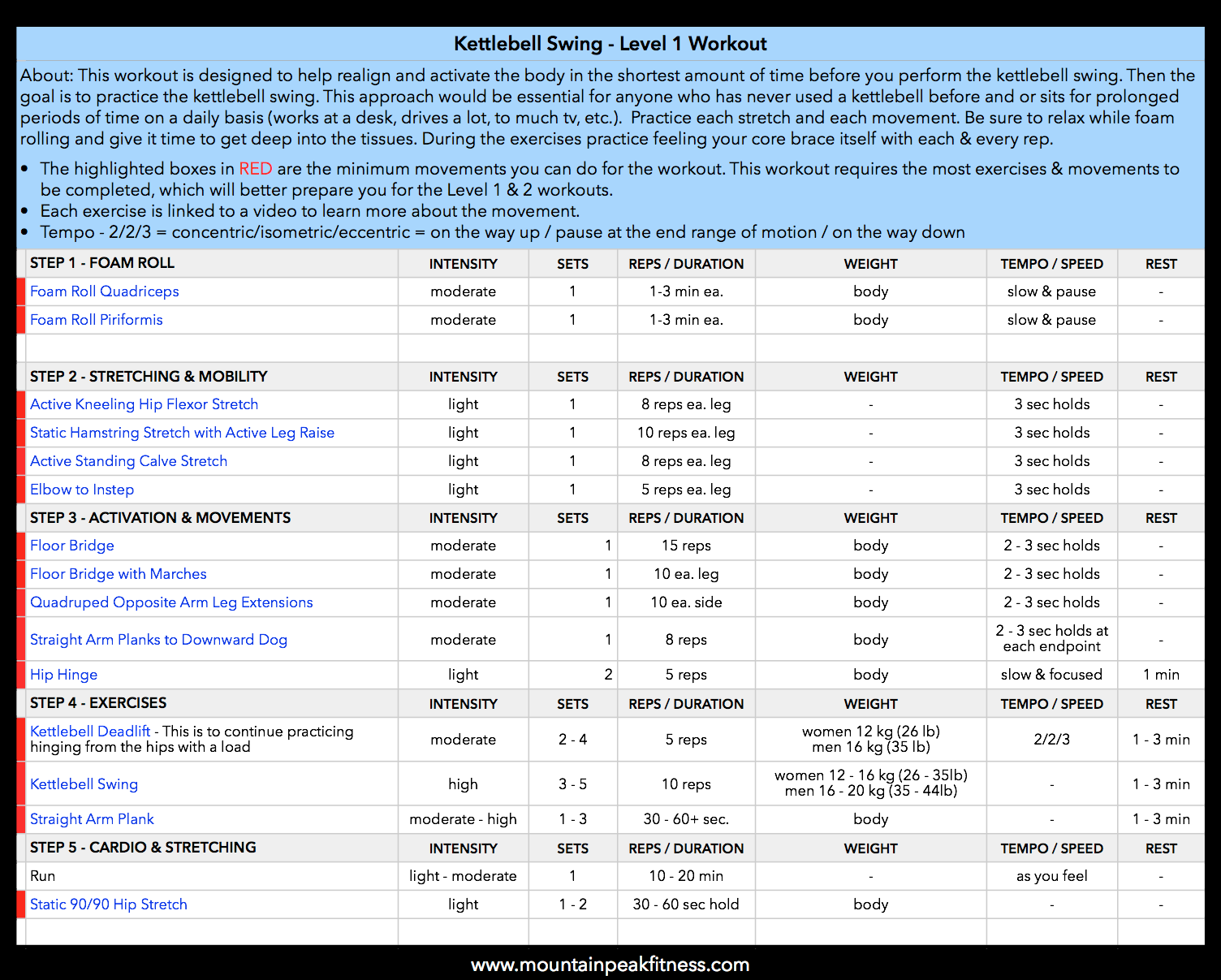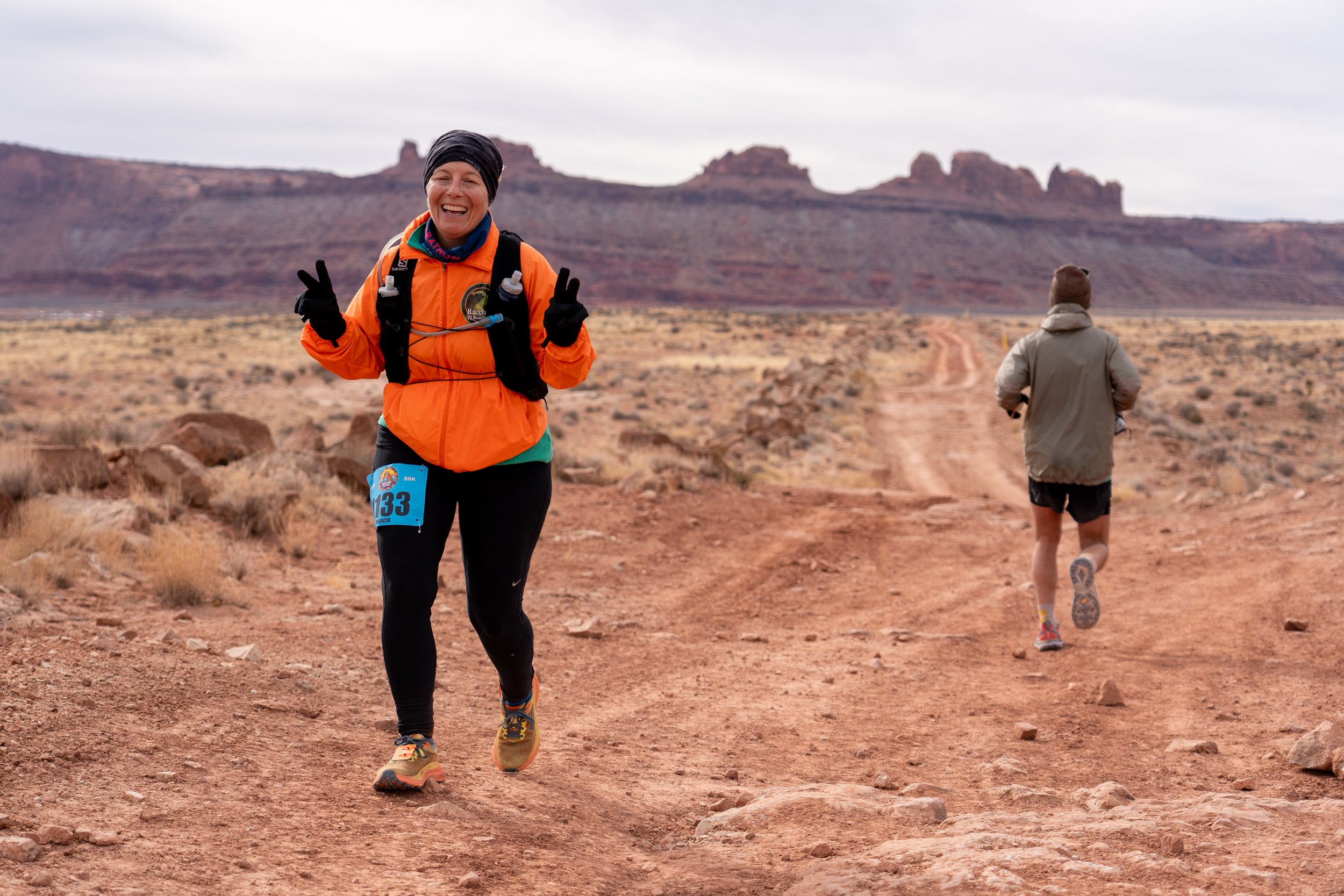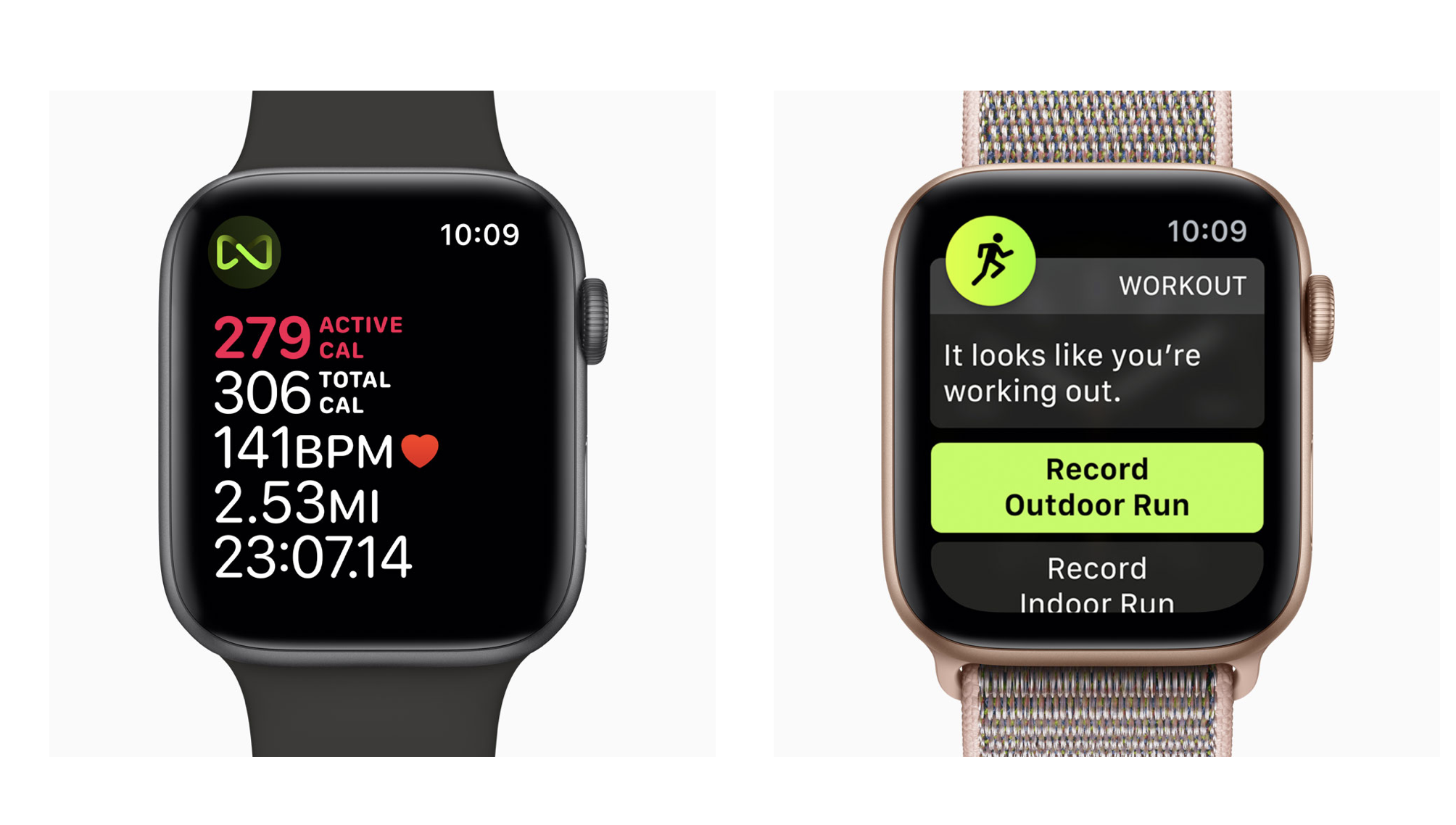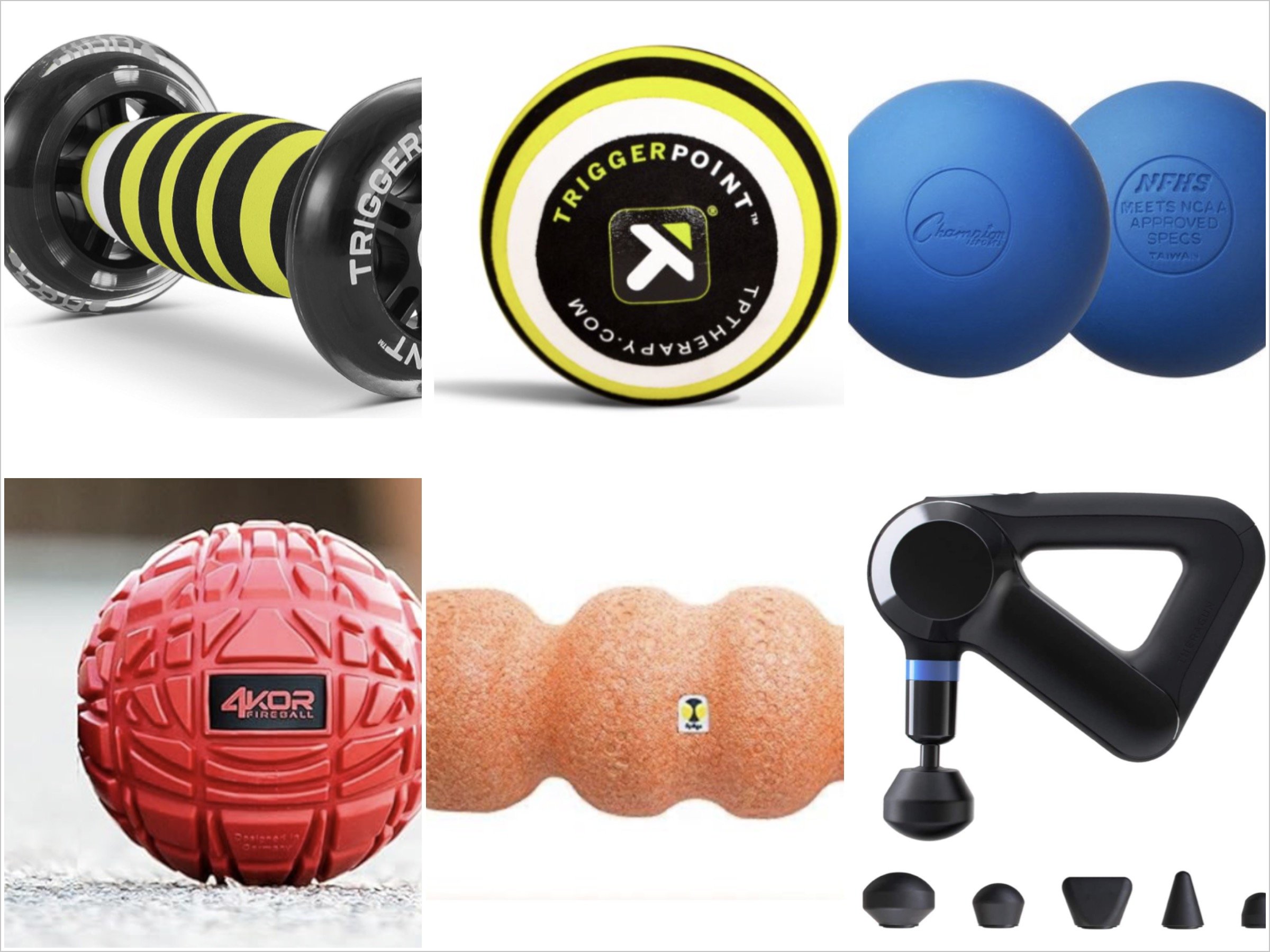Exercise Highlight 12: Revisiting the Kettlebell Swing
The kettlebell swing is a movement that all athletes should include in their training and is for anyone looking to increase their general fitness and functional strength. Training with kettlebells (KB) focuses on muscle integration and not isolation. You are training and conditioning the body as a whole. Everything from your cardiorespiratory to grip strength will be challenged. When properly executed, the KB swing will not only make you stronger but more athletic and less injury prone.
(just below is an audio format so you can listen to the article being read)
The weight of a kettlebell is 6 - 8 inches away from the center of your grip, making the weight more alive and places a higher demand on core stabilization, strength and power. Training with kettlebells is an extremely effective and efficient use of your time. You can’t find a simpler and more beneficial training tool than the kettlebell.
With today’s busy schedules and countless responsibilities, time is of the essence. With a little movement prep and a few kettlebells, you can get in a quick efficient workout just about anywhere. A workout can be as simple as 1 - 2 sets of 15 floor bridges (to activate & open up the hips) and 1 - 5 sets of KB swings. This will take no more than a few minutes. It’s best to have a couple of KB’s at home and at the office.
Owning a couple of quality kettlebells can give you a better workout then going to gyms that have an array of equipment. You will also find yourself being much more consistent with your workouts since there is no excuse to not getting them in, no matter how busy your life gets.
The KB swing puts direct emphasis on your posterior chain and core. The strengthening of these areas is vital for all athletes, whether a runner, cyclist, wrestler, etc. Your power, strength and rate of force production (ability of muscles to exert maximal force in a minimal amount of time) will increase dramatically by introducing KB swings into your program.
Kettlebell work should be done barefoot and on a hard dense mat. If your training at a gym, most don’t allow you to train barefoot so Vibram Fivefingers or minimal shoes will be just fine. If you never trained barefoot before or have some concerns about doing so, please feel free to contact us.
Depending on goals, training phase and fitness level; intensity and loads will vary from person to person, athlete to athlete. The most important thing when using KB’s is form. Take the time to practice and own the KB swing before progressing to any other KB movements. Many people progress way to fast and add KB movements that they shouldn’t be doing. Before moving onto other KB movements such as the KB 1 arm swing, turkish getup, cleans, snatches, etc., you must be in complete control of the swing and be able to handle the following.
Female KB Swing 50 reps - avg strength 16 kg (35 lbs), strong 20 kg (44 lbs)
Male KB Swing 50 reps - avg strength 20 kg (44 lbs), strong 32 kg (70 lbs)
I can’t stress enough that you must build a strong, functional foundation 1st. This means that when you own the movement, you are executing it from beginning to end. Quality over quantity and this takes practice. Just like any sport, working with kettlebells is an athletic endeavor. Don’t just do the exercise, feel the movement and be in control.
Before you begin with the kettlebell swing be sure to address any imbalances, injuries or compensations that you may have. Your body must be functioning and moving properly before you attempt a swing. If you sit down much of the day, on most days of the week (office work, driving a lot, cyclist who only rides, to much tv, etc.), more than likely your body has some compensations that need to be addressed.
One of the biggest compensations many people experience is a core that lags behind movement. This is when you do a movement such as a squat, reach, sprint, push-up, pulling, etc. and the muscles of your core; primarily your glueteals and deep abdominals hesitate to act while others try to make up for the lag, such as your low back, hamstrings, hip flexors and quads doing the bulk of the work. This is called faulty recruitment patterns and needs to be corrected and can be done with a little movement prep before each workout. This will be included in the example workouts for you to try below.
Movement Prep
Movement preparation is essential for all activities. This is considered the warm up and it should not be skipped. The movement prep that we will focus on with steps 1 - 3 in the workouts below will help ensure that your body is functioning well before you attempt a kettlebell swing.
Just one of the movements included with the movement prep.
The Hip Hinge
Proper execution of the KB swing begins with a good hip hinge. If you can’t hip hinge properly, don’t move and practice this until you can do so.
Stand with your feet slightly wider than your shoulders with feet slightly turned outwards and heels 12 inches in front of a wall.
Stand tall in a neutral position and place your hands on the top of your hip bones in front.
Draw in your navel, engaging the entire abdominal wall with glutes tight.
Sit your butt back not down by hinging from your hips keeping a neutral spine, while slightly bending your knees. The goal is to touch the wall with your glutes while keeping the integrity of a neutral spine.
Stand back up by driving through your glutes. At the top of the motion you must be able to keep the glutes contracted and abdominals engaged. This is a true brace and what you should be experiencing when doing a plank from the floor.
Progress to a kettlebell deadlift to finish the learning curve of the hip hinge.
Kettlebell Swing Standards
From “Simple & Sinister” by Pavel. This is a good book to pick up and will help you with the progression from a 2 handed kettlebell swing to the 1 arm kettlebell swing and then on to the Turkish Get up. These are the 3 main movements to master when training with kettlebells. If you don’t meet anyone of the standards listed below for the swing, the repetition doesn’t count.
The back is neutral. The neck is slightly extended or neutral on the bottom of the swing.
The heels, toes, and the balls of the feet are planted, and the knees track the toes.
The working shoulder is packed using the lats.
The kettlebell handle passes above the knees during the backswing.
The working arm is straight at the bottom position.
There is no forward knee movement on the upswing.
The body forms a straight line at the top of the swing. The hips and knees fully extend, the spine is neutral.
The kettlebell forms an extension of the forearm at the top of the swing; the arm is almost straight.
Inhale on the way down; forcefully exhale on the way up.
The abs and glutes visibly contract at the top of the swing.
The kettlebell floats for a second at the top of the swing.
Safety & Considerations
Kettlebell training is a serious and effective way to train and should not be taken lightly. Make sure that you buy quality well built kettlebells that are smooth at the grip, these can be handed down generation after generation. For the kettlebells that we recommend, click here.
Ensure that your surroundings are safe and allow plenty of room to move around and drop a kettlebell to the floor if necessary. Make sure no pets or children are in the area. Kettlebell movements are explosive in nature and once they are moving in the pattern you created, there is no stopping them so take extra caution with dogs, small children and cats.
Before you begin any strength & conditioning program be sure to consult your physician for medical clearance. If you have any health concerns or orthopedic limitations please consult with us or a qualified strength & conditioning coach before beginning. Train smart, train safely and enjoy your new found strength with the kettlebell swing!
Workouts
Each of the 3 downloadable workouts below are designed with simplicity and effectiveness in mind. The goal is to keep the workouts quick and focused, a no nonsense approach. These workouts are great for anyone that has limited time to participate in a Strength & Conditioning program. Click on the links provided for articles and exercise video tutorials. All of the exercises below can be found in our exercise library.
Begin with completing the Level 1 Workout, 3 - 5x per week, for 3 weeks.
Then progress to the Level 2 Workout, completing it 3 - 4x per week, while also doing the Level 1 Workout 1 - 2x per week, for another 3 weeks.
Lastly progress to the Level 3 Workout and complete this 2 - 4x's per week, along with the Level 1 Workout, 1 - 2x per week, for 4 additional weeks.
Take the 10th week off for rest. You can do some light movements or cross training activities such as biking, hiking, etc. This should also be included during each week to some degree depending on your fitness level and what you are training for.












